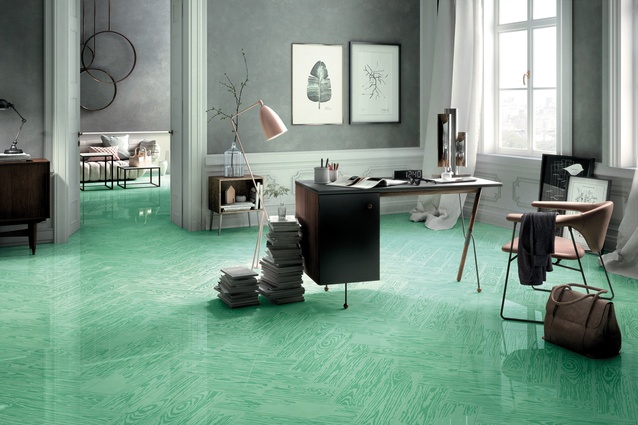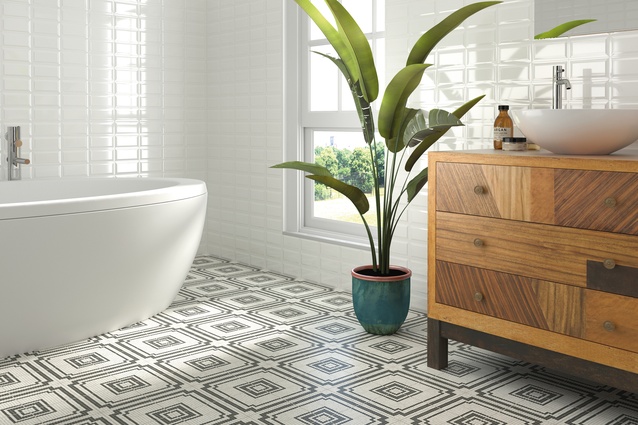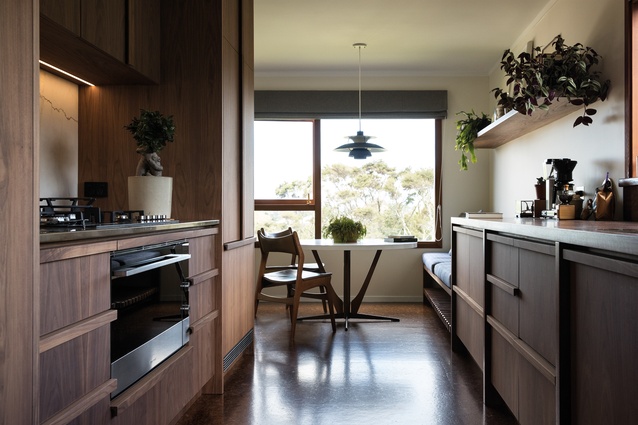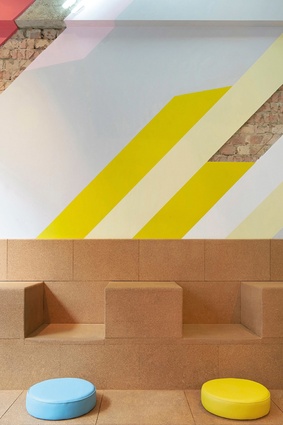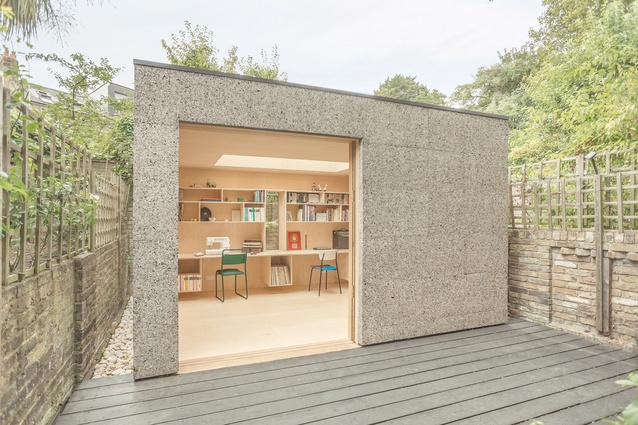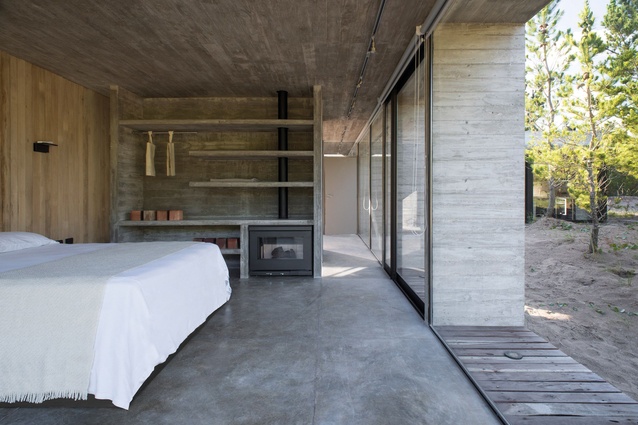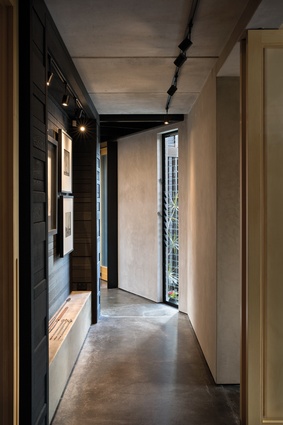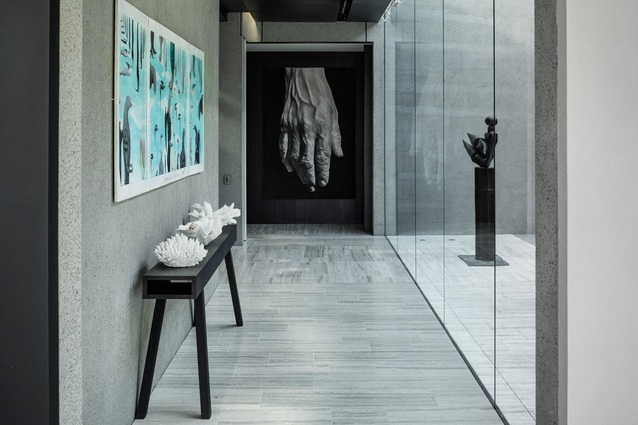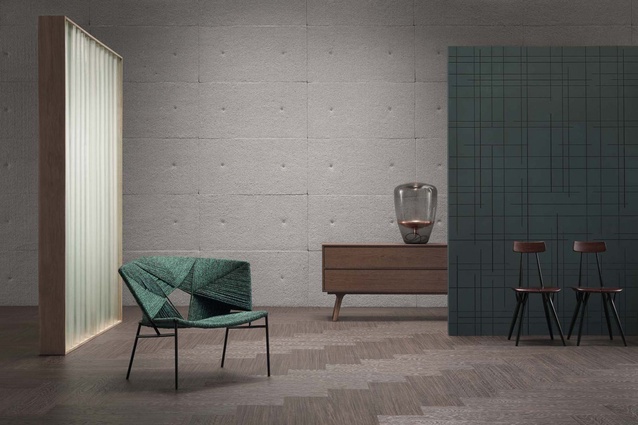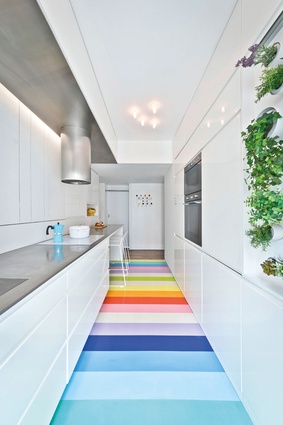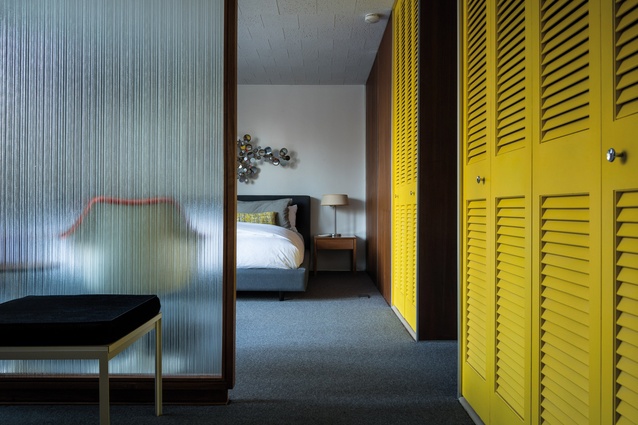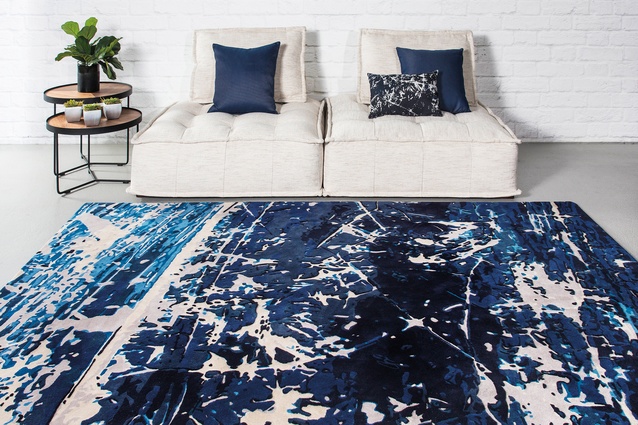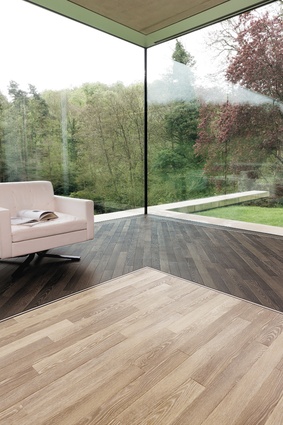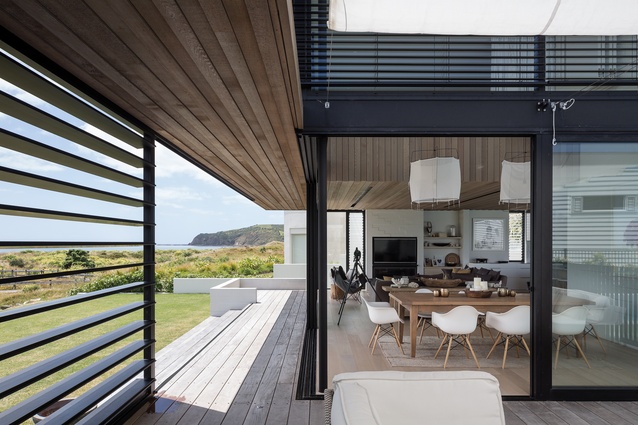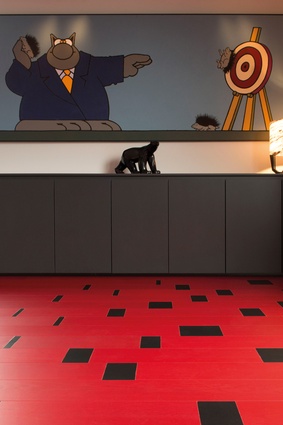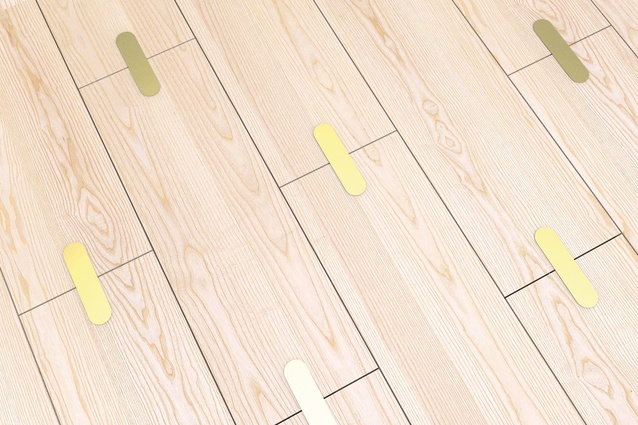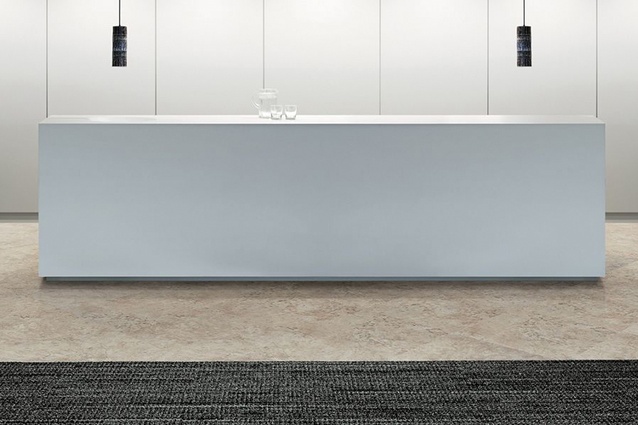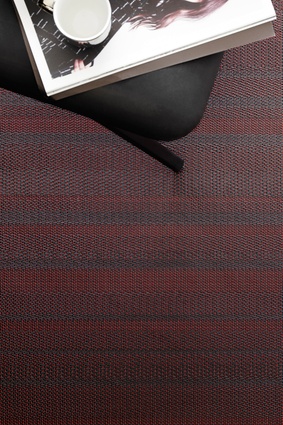Walk on by: flooring focus
‘Anything goes’ seems to sum up current flooring trends although more-daring patterns, colours and textures are increasingly the norm underfoot. We look at some of the latest flooring products and also some of our favourites.
The days of neutral flooring materials appear to be numbered. The trend in 2018 is towards designers and home-owners making bold choices around patterning, materials, textures and colours to create statement flooring in their projects. An ‘haute bohemian’ style is on trend, with colours and patterns that reference Moroccan fabrics, and tones that appear earthy and also regal, with maroons and deep sea greens appearing in carpet and rug choices. 2017’s metallics, millennial pink and mustard tones seem to have gone cold, replaced by a warmer terracotta, while chrome is the colour of choice for the season.
Geometric patterning, especially in large format, such as hexagonal mosaic tiles, is being used for hard floors. When it comes to timber, herringbone and chevron are making a comeback, as is band-sawn timber for a textured look and bleached wood. Reclaimed timber boards suit the bohemian vibe, with tinges of paint or markings from their previous lives still visible.
In New Zealand, there are some great companies offering recycled boards, such as Forté flooring and Southern Demolition. Wood planks are also appearing on walls and ceilings, where they carry this rustic vibe through to the rest of the interior.
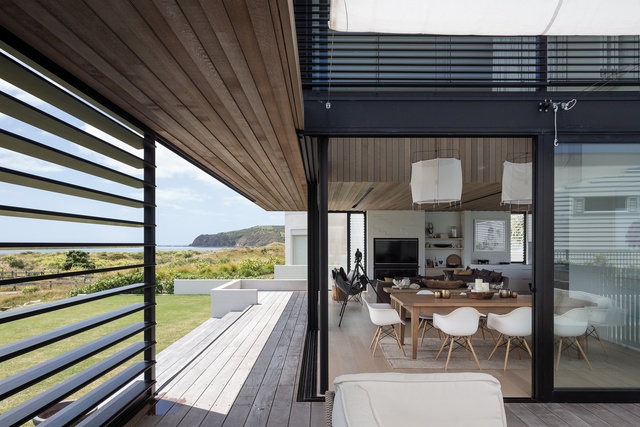
For those who enjoy a more subtle look, sisal rugs and carpets provide a softer palette that pairs well with timber furnishing. One example is Artisan’s new range of beautifully handcrafted rugs by Aussie designer Tammy Kanat, constructed from Tibetan highland wool, nettle and silk in a range of subtle colours.
Natural fibres are still looking good, especially bamboo silk, a sustainable and cheaper alternative for true silk, with a similar look and feel. While patterns are available for those ready to make bold choices, a safer option for carpeting is to choose a lush, mid-tone charcoal, which will offset on-trend fabrics but will also look great with a more neutral interior.
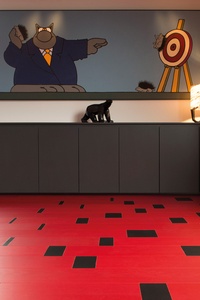
Alternatives to true timber flooring also abound with many options in luxury vinyl floors, some of which can be customised to create different patterns and tones from tiles that appear like stone or wood, such as those in the Moduleo Moods range. Timber alternatives are very convincing and are available in a vast number of different tones, grains and finishes.
Designers are reporting that larger-format tiles and boards are being requested in homes, in order to create a modern look. Athfield Architects’ Maria Chen favours a large-format cork tile from Wicanders, which has a cork veneer surface. “I’m raving about it,” she says. “It’s a beautiful product that is not at all like the cork tiles you saw in the 1970s; it looks marbled in texture. The tiles are really thick so they’re really warm and durable. If you damage the floor, it can be resurfaced.”
Chen recommends choosing durability even if it means a higher price. “Think about how often you want to clean, varnish, polish or replace your floor. If you go for the cheapest option, you may have to replace it in three years’ time and then the profit is lost.”
She also recommends using an interior designer or architect to help to integrate the flooring with the rest of the finishes in your house. “It’s such a large area of your house and, if it doesn’t work with your paint colours or kitchen, it will stand out. I would even integrate it with the outside of your house. The whole thing needs to pull together.”
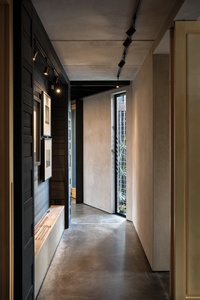
Chris Tate of Chris Tate Architecture agrees: “You have to look at the overall project and what you are trying to achieve. What are the aesthetics of the design and structure? The floors need to be complementary to the palette of colours and materials, and you need to keep everything consistent.”
For Tate, concrete flooring is a favourite, especially when it is finished using burnt power floating, a system that brings about a high-gloss finish. “The result of a burnt power floating finish is beautiful and appears to be organic. It’s not ground, just polished and sealed. Because it’s not perfect and has variants in it, there is a natural feel to it.”
Tate says that care needs to be taken with a concrete floor as it can be stained on site during the building process. He prefers a polished look rather than an aggregate, which can be too commercial in appearance. “Concrete is brutal but it’s also soft. It’s a real honest product. It has a sense of integrity,” he explains, adding that it must be heated so it doesn’t feel too cold underfoot.”
Tiled flooring
Tiled flooring has a special character all of its own and can be perfectly integrated into walls to create elegant designs. There are infinite choices in patterns, configurations and materials. Ceramic floor tiles are made from clay and sediments baked hard in a kiln. They are available either glazed, where the tile surface is totally sealed, or unglazed, such as terracotta, which are often sealed with a chemical agent. Glazed ceramic tiles are low maintenance and stain resistant while an unglazed tiled floor will develop its own unique patina over time. Gallery 4 offers a large collection of hexagonal, handmade encaustic cement tiles are highly durable and recyclable.
Cork flooring
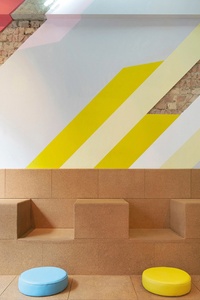
Cork floors are becoming very popular again. It’s not surprising given that cork offers great walking comfort, it has acoustic and thermal qualities and it’s a sustainable and renewable resource. In fact, cork is one of the most environmentally friendly types of flooring, producing nearly zero waste during its manufacturing process; thus, designers are increasingly using it in their schemes. One stylish example is the integrated cork furniture and flooring, by hot British architects Gundry Ducker, seen in the Biju Bubble Tea Rooms, which opened in London last year.
Cork also works well in wet areas, since it is naturally hygienic and resistant to mould and water. It is also easy to clean and maintain and is available in various products – by the roll, as narrow or wide planks, and as acoustic or hydrocork underlay – and in many colours. It is often prefinished as part of an installation system, making it suitable for do-it-yourself projects. Check out Portugal Cork, which offers beautiful cork products in more than 90,000 colour options.
Concrete flooring
Concrete floors soak up the sun’s heat during the day and release the heat when the ambient temperature drops at night, maintaining an even internal temperature all day-and-night long. This provides a more comfortable living environment with less need for heating or cooling and, thus, it saves money.
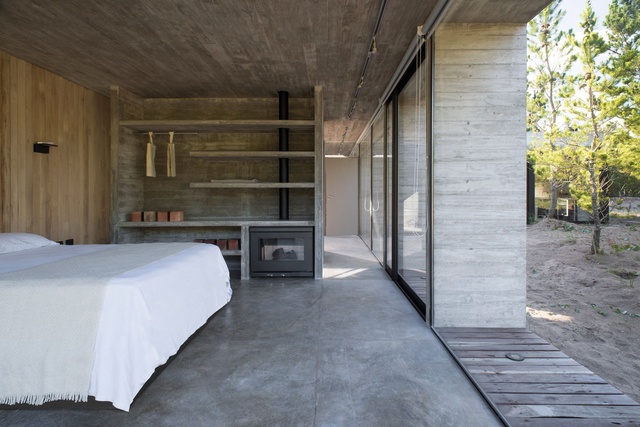
Concrete flooring is also durable and will last for generations. These days, you can create beautiful and unique surfaces by incorporating different colours, textures, cuts and grouts, and sealants. Power float flooring, for example, has a surface with a natural patina that looks almost mottled, making it natural and a bit cheaper than are polished concrete floors, which involve a process of grinding the surface.
Stone flooring
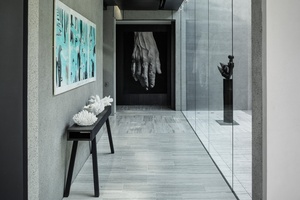
Stone flooring is a great way to create seamless indoor/outdoor flooring and it can be used in both dry and wet areas, as seen in a stunning Fearon Hay-designed house. There is also something primal about standing on natural stone, whether it be limestone, travertine, granite, slate or marble; each has its own unique properties.
This mountain-born mineral substance possesses very different properties from those of modern synthetic and manufactured stone products. Therefore, it is important to do your research to understand the characteristics of each material you are potentially buying and whether or not it is appropriate for application within your home. Man-made versions are typically less expensive and can achieve good results, also.
Linoleum and rubber flooring
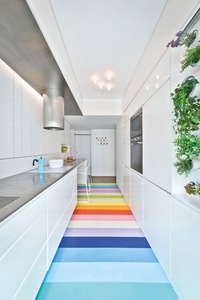
Traditionally, linoleum and rubber flooring has been made from mostly natural materials. Rubber flooring is manufactured from latex, which is a sap found in para rubber trees, while lino is made of solidified linseed oil, pine rosin, ground cord dust, wood flour and mineral fillers on a backing. Modern-day PVC products are sometimes referred to as lino; however, this is not technically correct. High-quality lino and rubber flooring products are known to be extremely durable and flexible.
We love the rainbow-striped rubber floor, by Sabo Project, in 14 different colours, while Italian company Pirelli‘s studded rubber floor tiles are always a classic. Locally, Forbo by Inzide offers very cool herringbone woodgrain and tartan patterns in its Marmoleum range, which is made from 97 per cent natural materials.
Carpets and rugs
People are appreciating the benefits of carpet much more now, with our better understanding of needing to conserve energy within the home. Studies have proven that carpet has great insulation properties, regardless of its fibre type, and it feels soft and warm underfoot. Carpet also absorbs sound better than do harder surfaces, creating a quieter environment, and is safer in babies’ rooms and for people who are more prone to falls.
It is best to research the most appropriate carpet for your needs. In the mid-century home, The Frost House in Michigan City, the owner used woollen carpet because most of the interior walls are aluminum and synthetics would create too much static electricity in the winter.
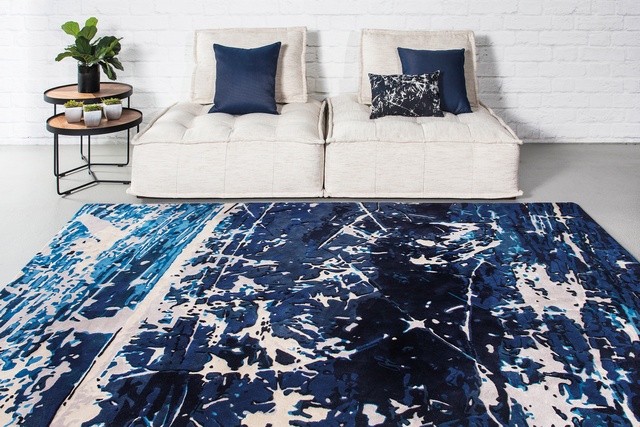
Timber flooring
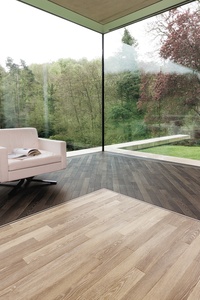
Timber is possibly the oldest building material in the world but, now, high-tech modern engineering and production processes can also transform wood into an endless array of options. Take your pick from bamboo, and new and reclaimed timbers, to engineered and laminated flooring. Parquet flooring is making a comeback and has been made more cost-effective and easier to construct by being available in engineered timbers in kitset form.
Compared with natural timber flooring, engineered flooring is considered to be more stable, while laminate flooring is more resistant to wear, constructed in high-density fibreboard but with a hard melamine surface. In Tuatara House architect Julian Guthrie made use of different hard-wearing timber finishes by Forté, which supplies European-made wooden flooring. Karndean‘s EW02 collection of vinyl wood floors cleverly uses the surface texture and grain pattern of different timber to create tactile surfaces.
Vinyl flooring
There is a new trend for ‘luxury vinyl flooring’ in distinctive colours and patterns. Included are realistic printed surface treatments, such as stylised timber patterns, concrete and stone in planks and tiles, which are available in numerous colours and glittery textures.
Vinyl is 100 per cent plastic, which makes it hard-wearing with superior resistance to moisture, making it ideal for bathrooms, around pools and in other damp areas. It is also quiet underfoot and tends to be budget friendly. French architect Jean Nouvel’s range of striped vinyl flooring for Bolon has a textural hand-woven effect that reflects light, engaging with the windows of a space.

